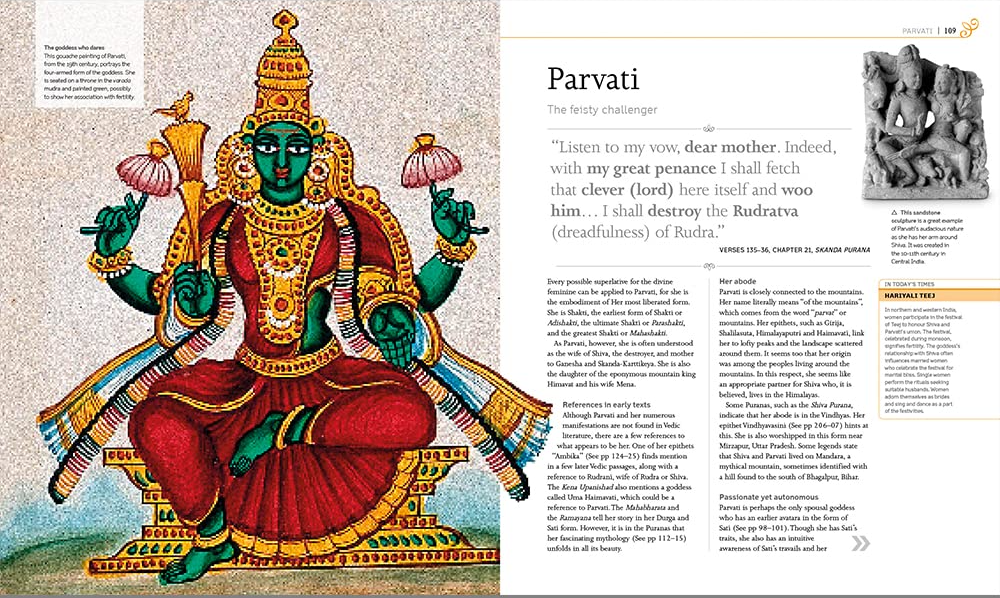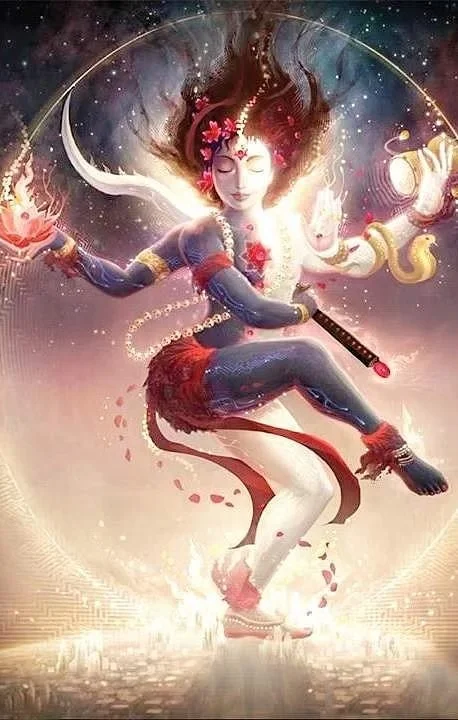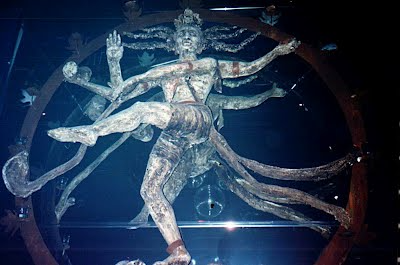In the vast tapestry of Hindu philosophy, the love story of Śiva and Śakti is more than celestial romance, it’s a cosmic blueprint. Picture this: time itself marrying energy. One is eternal and still; the other, wild and ever-moving. Together, they don’t just live happily ever after, they create, sustain, and dissolve the universe in an endless loop of existence.
The Existence Isn’t a Straight Line
Western science often tells us the universe began with a Big Bang and is now expanding like a balloon. But ancient Indian thought? It sees the universe as a rhythm, a creation, preservation, and destruction on repeat. Think of it as the cosmic version of a beat drop: Srishti (creation), Sthiti (sustainability), and Samhara(destruction) cycling endlessly.
Enter the divine trio: Brahma the architect, Vishnu the manager, and Śiva, not just the destroyer, but the cosmic reset button. Śiva isn’t destructive in a villainous way. He’s Mahākāla, the great timekeeper, the silent observer of beginnings and ends, the one who clears the stage for the next act.
And then, there’s Śakti, pure, pulsating energy. She’s the spark, the movement, the divine fire that animates everything, including Śiva. Without her, he’s just stillness. Without him, she’s pure chaos. But together? They are cosmic perfection.
Mythology as Metaphysics in Disguise
The ancients weren’t just spinning wild stories, they were encoding deep truths into their myths. Hinduism didn’t see gods as separate from the universe but as archetypes of cosmic forces. Take Śani (Saturn): slow-moving, dark, stern, just like the very physical planet. Or Śiva himself: meditating stillness paired with raw chaos, timelessness embodied.
These gods are less about literal belief and more about giving form to the formless, brewing wisdom out of just vast information we have around . Through them, philosophy becomes accessible, visceral, and deeply human. You’re not just reading about time and energy; you’re literally experiencing them dance.
Śiva Is Time, Śakti Is Energy. and Science Might Agree
Modern physics may not chant mantras, but it echoes something similar. Time, according to Einstein’s theory of relativity, which views time as a dimension, is not linear but woven into space as the fourth dimension. And energy? It’s never destroyed, only transformed. Sound familiar?
Einstein’s Theory of Relativity, both Special and General, introduced the revolutionary concept of spacetime, where time is not a separate, ticking entity but the fourth dimension, intricately woven alongside the three spatial dimensions of length, width, and height. In this four-dimensional continuum, time does not exist independently of space; instead, the passage of time is relative and depends on the observer’s motion (as explained in Special Relativity) or the influence of gravity (as described in General Relativity). This means time is not linear for all observers, what appears simultaneous to one person may not be to another, a phenomenon known as the relativity of simultaneity. While relativity doesn’t propose time as circular (as some Hindu cosmologies do), it challenges the classical notion of a fixed, universally flowing time, replacing it with a more fluid and interconnected understanding of how we experience reality.
In Śaivism, time isn’t a ticking clock, it’s a loop. Past, present, and future already exist; they’re just playing out in cycles. That idea finds surprising parallels in string theory, where multiple dimensions and looping timelines are mathematically plausible.
So, when Śiva stands still and Śakti swirls around him, we’re not watching a dance drama, we’re witnessing a physics equation in motion.
Why Their Union Matters (Even If You're Not Religious)
Śiva is the canvas: unchanging, vast, eternal. Śakti is the paint: explosive, colorful, kinetic. Together, they are “existence” . This idea isn’t just esoteric mysticism, it’s an elegant way to understand how everything comes to be and fades away.
Tantric traditions take this further. Śiva without Śakti is pure potential, like a charged battery disconnected. Śakti without Śiva is a live wire, full of power but directionless. Only together do they create a balanced universe, a conscious reality where time and energy create you, me, everything.
What the Scholars Miss
Most academics isolate Śiva as the mystical recluse or Śakti as the fierce mother goddess. But very few put the two together as time and energy, co-parents of the universe.
Writers like Contzen Pereira talk about Śiva’s transcendence, while Nilima Chitgopekar explores Śakti’s dual nature. But what if we viewed them together, as a single operating system, Śiva as code, Śakti as execution? That’s where the real magic (and insight) happens.

The Final Spin: The Tāṇḍava Isn’t Just a Dance.
When Śiva dances his Tāṇḍava, he’s not just grooving, he’s resetting reality. Every stomp is destruction. Every swirl is creation. And Śakti? She’s the dance herself that Siva attempts, the energy that powers the movement.
This isn't mythology to shelve; it's a cosmic lens to live by. Time and energy, stillness and chaos, masculine and feminine, they’re not at odds, they’re entwined. They’re telling us that existence isn’t linear or logical. It’s a dance. A loop. A love story.
So maybe it’s time we stop seeing ancient philosophy as outdated folklore. Maybe, just maybe, it's the science we haven't caught up to yet.

 Shifa Mehra
Shifa Mehra